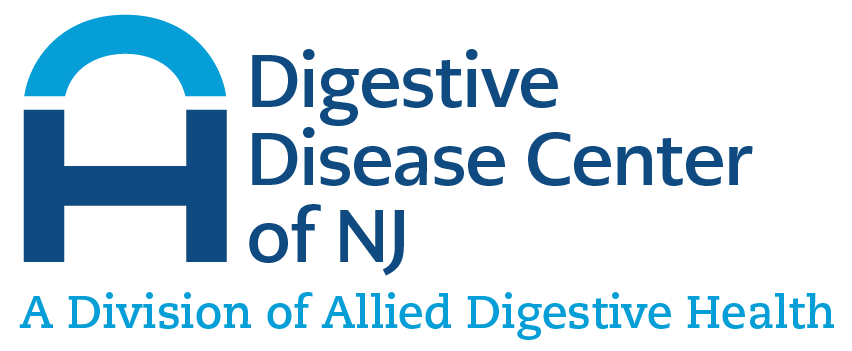Esophageal Cancer Treatment
The job of the esophagus is to help move food and liquid you swallow from your throat to your stomach so that it can be digested. However, abnormal cells can grow and multiply, which results in esophageal cancer. Worldwide, esophageal cancer is the sixth-leading cause of cancer death, and it requires intensive treatment. Heavy alcohol use and smoking are attributed to cases of some people with esophageal cancer. Read on to learn more about esophageal cancer and its stages, and how physicians treat esophageal cancer.
What Is Esophageal Cancer?
The esophagus uses several layers of muscle in order to move food and liquids down through the stomach. At the end of the esophagus is a very important muscle—the lower esophageal sphincter (LES). This muscle resembles a valve, and it opens and closes when necessary to let food through.
Sometimes, abnormal cells can form in either the lining or the tissue of the esophagus, and form cancerous tumors. There are two types of esophageal cancer. These two types also occur in different parts of the esophagus.
Adenocarcinoma is one type of esophageal cancer, and according to the Cleveland Clinic, rates have steadily been rising in the United States. This occurs in the lower portion of the esophagus.
Squamous cell carcinoma occurs in the cells of the lining of the esophagus. This type of cancer usually affects the upper and middle parts of the esophagus. Both types of cancer are serious and require esophageal cancer treatment.
What Are the Signs & Symptoms of Esophageal Cancer?
Unfortunately, in its early stages, esophageal cancer may have no obvious signs or symptoms and go undetected. This is why treatments for esophageal cancer can be quite difficult because in many cases, the cancer has spread to other parts of the body. However, as a tumor begins to grow, the first symptom patients usually notice is dysphagia, which is trouble swallowing. They may experience pain and discomfort while swallowing as well. There are other symptoms of esophageal cancer, which include:
- Heartburn
- Vomiting
- Coughing up blood
- Pain in the throat or back
- Pain in the breastbone or between the shoulder blades
- Chronic cough
- Unintentional weight loss
If you experience any of these symptoms, particularly if they present with dysphagia, you should consult your gastroenterologist immediately, should you need esophageal cancer treatment.
How Your Health History Impacts Your Risk of Developing Esophageal Cancer
There are many risk factors and possible causes of esophageal cancer. Sometimes, your medical history or lifestyle habits contribute greatly to the chances of developing esophageal cancer. The risk factors are:
- Being male. Men are three times more likely to develop esophageal cancer.
- Older age. Those over 6- are much more likely to develop the disease.
- Use of tobacco. This includes both cigarette smoking and smokeless tobacco.
- Overuse of alcohol. Heavy, chronic drinking is correlated with esophageal cancer development.
- Ethnicity. African Americans and Asians are more likely to develop squamous cell carcinoma, and Caucasians are more predisposed to adenocarcinoma.
- Human papillomavirus (HPV). This is a viral infection that can damage the throat, mouth, and other parts of the body. Those with HPV have an increased risk of cancer.
- Barrett’s esophagus and/or acid reflux. Barett’s esophagus changes the cells at the lower end of the esophagus and is often a precursor to esophageal cancer. Those with chronic acid reflux or gastroesophageal reflux disease (GERD) also have an increased risk.
- History of cancer. If you have already experienced cancer in a different part of the body, this becomes a high risk factor.
- Exposure to toxins. Those that work with solvents have an increased risk of cancer.
Two rare risk factors have also been associated with esophageal cancer: achalasia and tylosis. Achalasia is a rare disorder that causes difficulty in swallowing, and tylosis is a rare disorder where excess skin begins to grow on the extremities.
Treating Esophageal Cancer
If you have some signs and symptoms of esophageal cancer, you should consult your gastroenterologist for esophageal cancer treatment. If your physician suspects it as well, or they suspect another gastrointestinal disorder, then they will run a series of tests. These may include:
- Barium esophogram. During this test, a patient will swallow a liquid barium solution, which will “light up” the esophagus on an X-ray so that your provider can get a better look.
- Upper endoscopy. For this diagnostic, you will be given light sedation, and a long, flexible tube called an endoscope will be inserted into the mouth and down to the esophagus. A tiny camera at the end allows your gastroenterologist to see photos of the esophagus. Endoscopy can also double as treatment in some cases. If there is an obstruction, the doctor can remove it by using the endoscope and a balloon for dilation. Your doctor may also take a biopsy (tissue sample) to be analyzed during this procedure. Your physician can also conduct an esophageal endoscopic ultrasound, which uses the endoscope to perform the ultrasound.
- Computed tomography (CT) scan. If esophageal cancer is present, this procedure can see how far the tumors have spread.
Esophageal cancer in the later stages can seriously affect quality of life because that means the cancer has spread either to lymph nodes, distant organs, or both. Treatment for esophageal cancer depends upon what stage it is in. However, common esophageal cancer treatments include:
- Surgery. This is the most common esophageal cancer treatment. It can be performed in the early stages to cure esophageal cancer, but it can also be used in the later stages to relieve symptoms to keep the patient comfortable. The procedure is called an esophagectomy, and it may be used to remove tissue, parts of the esophagus, the entire esophagus, and the lymph nodes surrounding the esophagus.
- Radiation therapy. This treatment is performed by radiation oncologists and uses high-energy rays (radiation) to kill cancer cells. It is often combined with chemotherapy as a part of a treatment plan.
- Chemotherapy. Chemotherapy uses medications to stop or kill cancer cells. Chemotherapy and radiation therapy are often used together.
- Photodynamic therapy (PDT). This treatment uses photoactive medications that absorb cancer cells, which in turn, kills them.
- Targeted therapy. This relatively new treatment targets cancer’s tissue, proteins, or genes that contribute to cancer.
- Feeding tube. A feeding tube, known as a jejunostomy tube, is often inserted before treatment.
- Clinical trials. Doctors may recommend that those with advanced cancer opt for clinical trials.
Esophageal cancer has five distinct stages, from Stage 0 to Stage IV. While the two types of esophageal affect different parts of the esophagus, the cancer spreads in a similar way as it progresses.
Stage 0 Esophageal Cancer
During stage 0, for squamous cell carcinoma, the cancer is only in the top layer of the cells in the esophagus lining and has not spread. These abnormal cells are called high-grade dysplasia. For this stage, adenocarcinoma is classified as the same.
Stage 1 Esophageal Cancer
Stage 1 has substages in it:
- IA: For squamous cell carcinoma, the cells are starting to spread to the tissue of the epithelium. It has not yet spread to lymph nodes or organs. Just as with Stage 0, adenocarcinoma is classified the same.
- IB: In squamous cell carcinoma, the cancer spreads deeper into the epithelium and also begins to affect thick muscle. It has not yet spread. Adenocarcinoma is the same.
Stage 2 Esophageal Cancer
Stage 2 esophageal cancer is also divided into substages:
- IIA: For squamous cell carcinoma, the cancer begins to grow into the thick muscle layer or the cancer is spreading to the outer layer of the esophagus. It has not spread to lymph nodes or organs. For adenocarcinoma, the cancer has spread to the thick muscle layer.
- IIB. For adenocarcinoma, the cancer continues to spread in the epithelium and thick muscle layer and also has spread to one to two lymph nodes. It has not yet spread to organs. For squamous cell carcinoma, the cancer continues to spread through the outer layer. IIB for squamous cell carcinoma can also include spreading to one or two nearby lymph nodes but no organs.
Stage 3 Esophageal Cancer
Like the other stages, Stage 3 esophageal cancer also has stages:
- IIIA. For squamous cell carcinoma, the cancer continues to spread throughout the thick muscle layer and epithelium. It has also spread to up to six nearby lymph nodes but no organs. For adenocarcinoma, the description is the same, and it also spreads to up to six lymph nodes.
- IIIB. For adenocarcinoma, the cancer continues to spread through the thick muscle layer and outer layer of the esophagus. Or, it may also have spread to the tissue around the lungs and the diaphragm and has spread to two nearby lymph nodes. It has not yet reached any organs. For squamous cell carcinoma, the description of IIIB is the same.
Stage 4 Esophageal Cancer
Stage 4 is the most serious stage of esophageal cancer. Sometimes esophageal cancer treatment is used during this stage only to relieve symptoms and keep the patient comfortable, as the cancer may not be treatable. Stage 4 also has substages:
- IVA. For squamous cell carcinoma, the cancer may spread to the diaphragm and the tissue around the lungs. Or, cancer has spread to the windpipe, the spine, aorta, and up to six nearby lymph nodes. However, IVA could spread to anywhere in the esophagus, accompanied by seven or more lymph nodes being affected. Cancer has not yet spread to organs. For adenocarcinoma, the description is the same.
- IVB, For adenocarcinoma, the cancer has spread to nearby organs, such as the liver and lungs. It may have also spread to distant lymph nodes. Squamous cell carcinoma is the same. Stage IVB can be located anywhere in the esophagus.
Determining a stage is also accompanied by a cancer grade. The grades describe the condition of the abnormal cells or tumors, which can give a more accurate diagnosis.
Scheduling a Consultation With a Gastroenterologist
If you experience difficulty swallowing, have noticeable symptoms, or are concerned about the likelihood of esophageal cancer, you need esophageal cancer treatment. To schedule a consultation with an experienced gastroenterologist, you can contact any of Allied Digestive Health’s care centers here. We offer compassionate and comprehensive care for all of your gastrointestinal needs.


